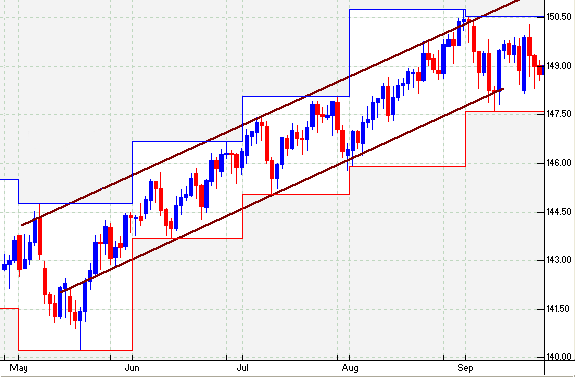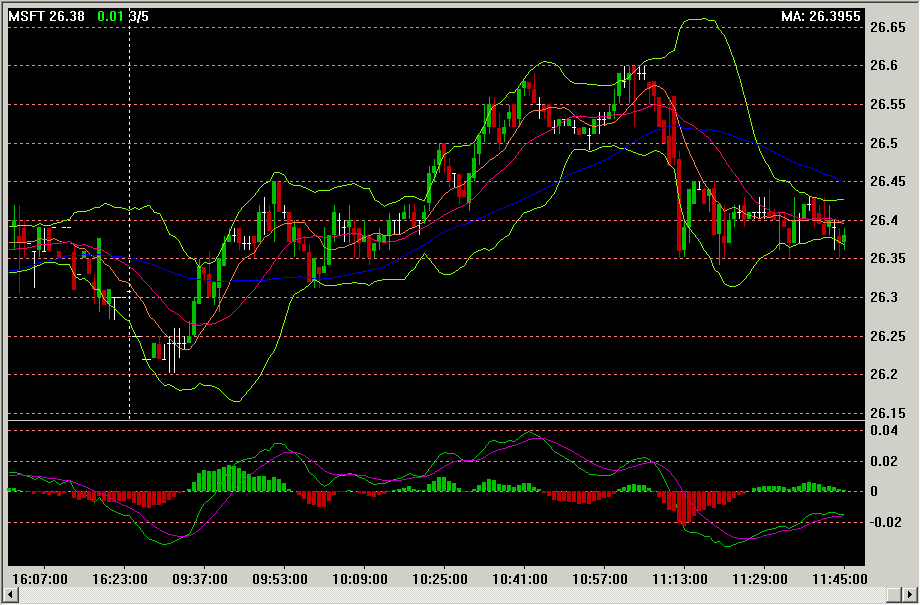Technical Analysis
Post on: 19 Июль, 2015 No Comment

Technical Analysis
Important: This page is part of archived content and may be outdated.
Among various methods financial analysts utilize for forecasting the markets, the two most common methods are fundamental and technical analysis. All in all, different technical theories can be viewed as puzzle stones, the combination of which should lead us to the ultimate goal of technical analysis the set-up of the highest probability scenario for a specific market direction.
The roots of modern-day technical analysis stem from the Dow Theory, developed around 1900 by Charles H. Dow (1851-1902). His famous market philosophy, price action analysis and other techniques have been around for almost 100 years, yet even in todays volatile and technology-driven markets, the basic components of Dow Theory still remain useful.
In a series of stunning editorials for the Wall Street Journal at the turn of the century, Dow laid out the foundations of his own theory on the market. The market is always considered as having three movements all occuring at the same time primary, secondary and intraday.
Averages discount everything. The market reflects all available information. Everything there is to know is already reflected the markets through price. Prices represent the total sum of hopes, fears and expectations of all participants. Interest rate movements, earnings expectations, revenue projections, presidential elections, product initiatives and everything else is already priced into the market. The unexpected occurs, but usually this affects only the short-term trend. The primary trend remains unaffected.
Dow developed a conception of confirmation which is now better known as a divergence. Traders use it to compare price movements to oscillator movements to define the strength of the prevailing trend. Dow placed the emphasis on the importance of trading volume to predict price rebounds and trend direction. For example, if the market is oversold, selling will be accompanied by low volume, whereas a rally will result in an increasing volume.
Robert Rhea spent a lot of time on market statistics. He was the first technical analyst who defined that divergence should have the narrowest range so, that it could be considered as a well-defined secondary movement. Richard Schabacker (1902-1938) is considered to be a grandfather of technical analysis who laid the foundations for modern pattern analysis. He classified tools which helped technical analysts not only to forecast future market movements, but also to foresee when the prevailing trend would finish. He was the first to classify common charts patterns, develop the theory of price gaps, formalise the use of trend lines and prove the importance of support and resistance levels.
Richard Schabackers most popular tool is Bar charts. The vast majority of chart patterns fall into two main groups: reversal and continuation. Reversal patterns indicate the trend may change and may be broken down into top and bottom formations. Continuation patterns indicate that the trend takes a pause and resumes its previous direction after a while.
Richard Wyckoff traded stocks and bonds in the early and mid 1900s. His subject of interest was logic matters behind market actions. He developed a methodology which concentrated on the Volume-Price, Point and Figure and the process of sifting and ranking analyses. He developed such patterns as Swing and Upthrust which provide a trader with the key touch points as they describe test levels and false breakouts, which are produced when the price fluctuates within a trading range. Richard Wyckoff also introduced index comprised of five selected shares (the most sensitive ones) to predict market reversals on the early stages.
The next logical step of the Dow Theory was Elliott Wave Theory, which was proposed in the early 1930s by R.N. Elliot (1871-1948).
Principles of Technical Analysis

Technical analysis predominantly uses charts to forecast future price movements. Nowadays it is not necessary to draw charts on paper as the process is automated by specially designed computer programs. If you want to get more information on one of such trading platforms, please refer to the page about MetaTrader 4.
There are three sources for the technical analysis: price, volume and open interest (only for the future contracts).
Principles of technical analysis are the following
- Price discounts everything
- Price movements are not totally random, or prices trend
- History repeats itself
Price discounts everything. Price is affected by economic, political and other factors, and all information is already reflected in it. Technical analysis utilizes the information captured by the price to interpret what the market is saying with the purpose of forming a view on the future.
Price movements are not totally random, or prices trend. The main purpose of the charts is to define a trend at an early stage and to trade in accordance with its direction.
History repeats itself. The techniques which were effective in the past can be still effective to forecast future price movements.














